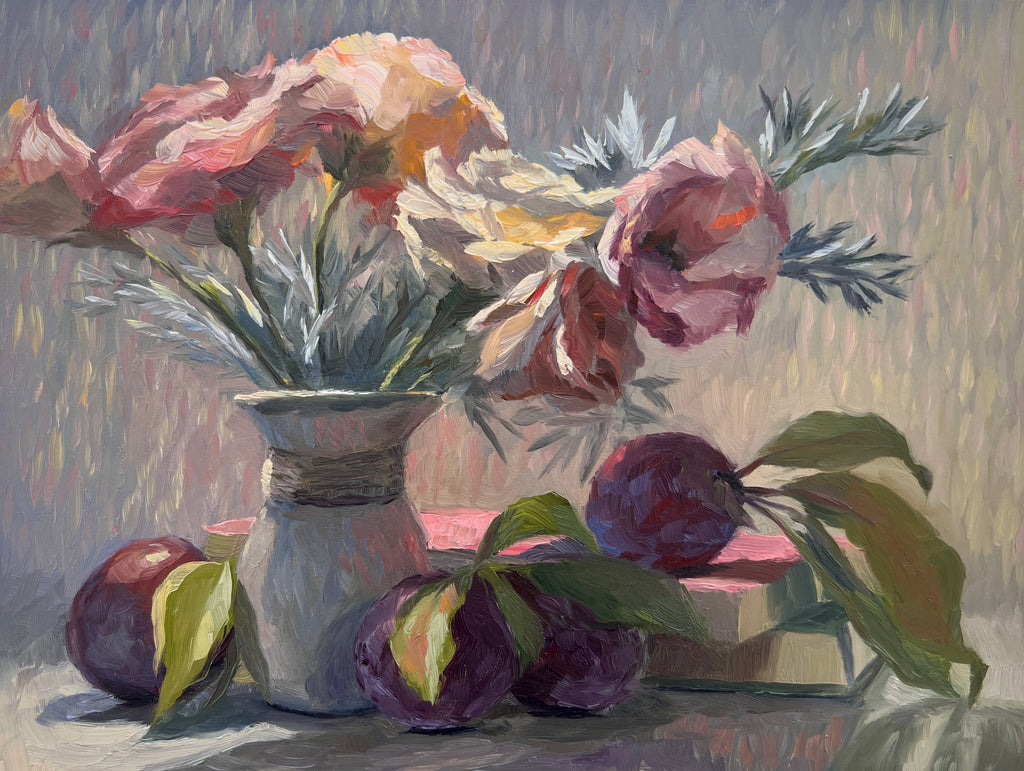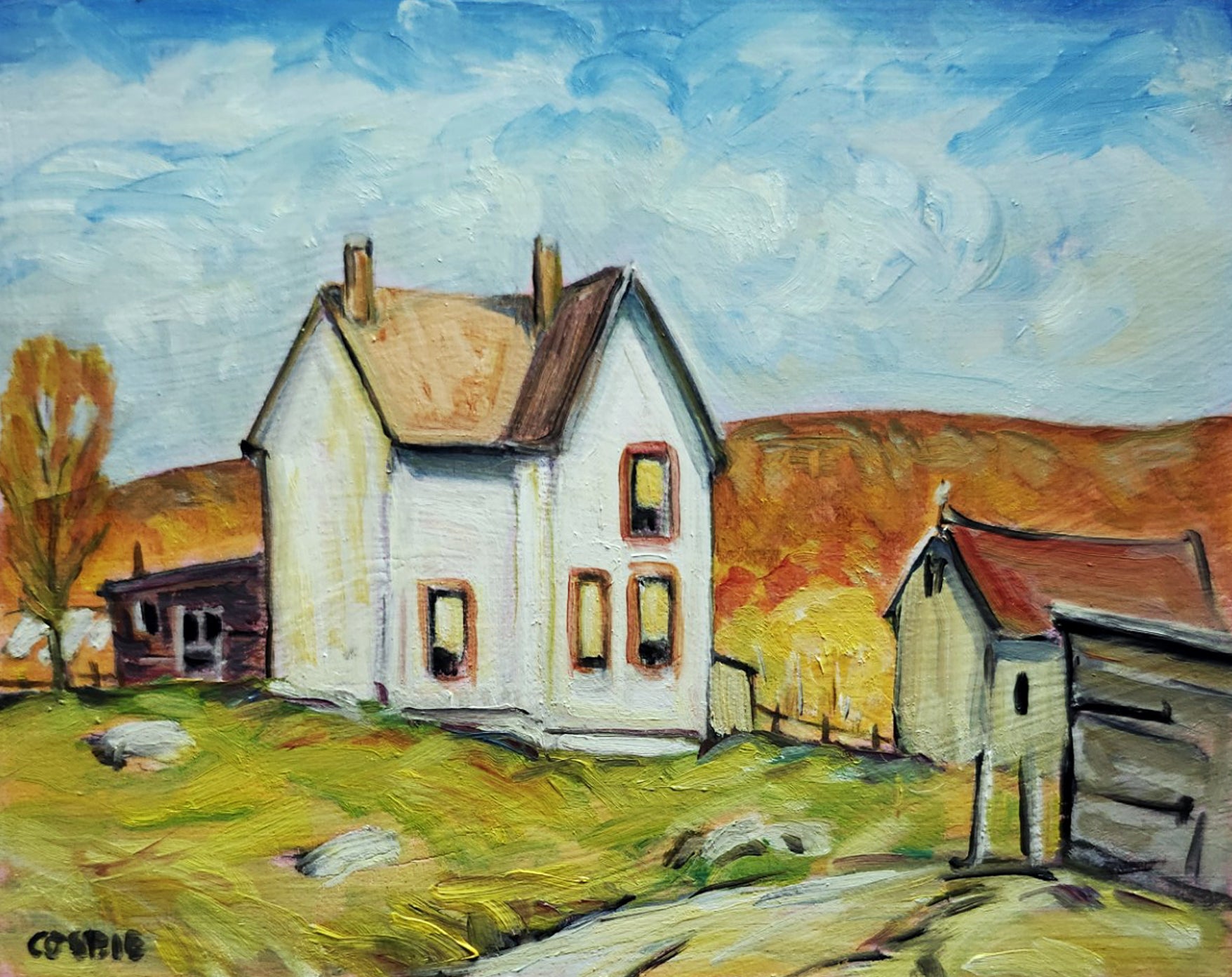Oil Paintings for Sale to Transform Any Living Area
Wiki Article
Checking out Everything About Oil Paintings: A Guide to Recognizing Their Charm and Value
Oil paintings have astounded target markets for centuries, providing a look into the creative mastery of different ages. Their abundant background is linked with cutting-edge methods and extensive psychological expression. Understanding the materials and techniques behind these art work can improve appreciation. In addition, the marketplace for oil paintings provides opportunities for enthusiasts and financiers alike. As one explores this fascinating globe, the inquiry arises: what makes an oil paint absolutely useful?The Background of Oil Paint: A Journey Through Time
Oil paint has origins that date back to ancient times, it genuinely prospered during the Renaissance, when musicians found its convenience and abundant color potential. Early examples can be traced to the 7th century, with methods progressing notably throughout societies. The tool became popular in Northern Europe in the 15th century, particularly through the jobs of musicians like Jan van Eyck, who originated its use for detailed realism and vivid tones. This duration noted a departure from tempera paints, enabling greater deepness and texture. As oil painting spread, it affected countless artists, leading to work of arts by renowned figures such as Leonardo da Vinci and Rembrandt. The tool's heritage continues, shaping the art world well into contemporary times.Understanding Oil Paints: Products and Techniques
As artists check out the world of oil paints, they encounter a diverse array of products and strategies that define this tool. The main components of oil paint consist of pigments, which provide shade, and drying out oils, such as linseed, that bind the pigments and promote application. Numerous additives can customize the paint's appearance and drying time, enhancing flexibility. Strategies like glazing, where transparent layers are constructed up, and impasto, which entails using thick paint, enable for different visual impacts. In addition, using brushes, palette blades, and also fingers can develop one-of-a-kind structures and surfaces. Comprehending these materials and strategies allows musicians to fully share their imagination and accomplish the wanted influence in their artwork.The Role of Shade in Oil Paints
Color plays an essential duty in oil paints, influencing both visual appeal and emotional resonance. Comprehending shade concept essentials, consisting of the partnerships between shades, can enhance a musician's capability to share state of mind and ambience. Additionally, grasping color blending methods permits better depth and richness in a paint's scheme.

Color Theory Essential
Understanding color theory is necessary for musicians dealing with oil paints, as it forms the foundation for creating visually appealing and harmonious structures. Color theory includes the research of just how colors engage, the shade wheel, and the connections in between primary, additional, and tertiary colors. Artists utilize corresponding shades to improve contrasts and create prime focus, while comparable shades promote unity and cohesiveness within an item. Furthermore, the concepts of cozy and amazing shades influence the perception of deepness and room in a painting. Understanding these principles allows musicians to manipulate shade successfully, assisting the viewer's eye and connecting their designated message. Mastery of color theory inevitably enhances an artist's capability to communicate emotions and concepts via their work.
Emotional Influence of Shade
The psychological impact of color in oil paints plays a critical function in how viewers view and attach with artwork. Colors evoke details feelings and state of minds, affecting the audience's emotion. As an example, warm hues like reds and oranges can produce a sense of warmth and power, while cool tones such as blues and environment-friendlies commonly evoke calmness or self-contemplation. Artists tactically choose shade palettes to improve narrative aspects, guiding the audience's emotional trip. The saturation and comparison of shades additionally intensify these results, drawing focus and producing emphasis. Eventually, the interaction of colors in oil paints not just improves their aesthetic appeal however likewise acts as an effective tool for psychological expression, improving the customer's experience and analysis.Shade Combining Techniques
While many aspects of oil paint contribute to the total composition, mastering shade blending methods is crucial for attaining wanted effects and depth. Shade mixing can be approached with various approaches, consisting of the additive and subtractive procedures. Additive mixing involves integrating colors of light, while subtractive blending relies upon pigments, where shades blend to develop brand-new shades. Musicians usually use a limited combination to create harmonious works, recognizing the connections between primary, second, and tertiary shades. Methods such as glazing and scumbling even more improve deepness and brightness. By masterfully mixing shades, a musician can stimulate emotions, produce prime focus, and achieve a sense of realistic look, ultimately boosting the paint's psychological and visual impact.Famous Oil Painters and Their Iconic Functions

Famed for their mastery of color and technique, oil painters have actually developed a few of one of the most well known art work in history. Renowned musicians like Vincent van Gogh astounded target markets with his emotive brushwork in "Starry Evening," while Claude Monet's "Impact, Sunrise" prepared for Impressionism. Leonardo da Vinci's "Mona Lisa" continues to be an enduring sign of imaginative brilliant, showcasing his ability in catching human expression. Rembrandt's "The Night Watch" shows his cutting-edge usage of light and darkness. Various other notable figures consist of Pablo Picasso, that reinvented modern-day art with his bold trial and error in jobs like "Les Demoiselles d'Avignon," and Georgia O'Keeffe, whose lively depictions of landscapes and flowers aided specify American modernism. Each artist's special style contributed substantially to the oil paint landscape.
Exactly how to Evaluate the High Quality of an Oil Painting
Evaluating the top quality of an oil painting includes a cautious evaluation of craftsmanship techniques, in addition to an evaluation of shade and make-up. Observing brushwork, layering, and the application of paint can expose the musician's ability level. Furthermore, the interplay of shades and the overall setup of components contribute substantially to the painting's visual worth.Analyzing Workmanship Techniques
A careful assessment of workmanship techniques is essential for figuring out the high quality of an oil paint. Evaluators need to initially check out the application of paint; thick, distinctive brushstrokes might recommend a knowledgeable hand, while overly uniform applications might show a lack of deepness. oil paintings for sale. The layering method is additionally important; the existence of lusters and differed thickness can improve luminance and complexity. Additionally, the top quality of the materials made use of, such as the canvas and pigments, plays a considerable role in resilience and general visual. Attention to information in elements like edges and shifts between colors reflects the artist's dedication to their craft. Ultimately, these strategies add to the paint's psychological influence and market price, acting as signs of the musician's skill and intentEvaluating Shade and Composition
While assessing the quality of an oil painting, one must concentrate on the interaction of color and structure, as these elements are fundamental to the art work's overall impact. Shade selections can establish and stimulate feelings state of mind; as a result, the artist's combination ought to be checked out for harmony and comparison. A well-balanced composition guides the viewer's eye and produces a feeling of unity. Musicians commonly utilize techniques like the regulation of thirds or leading lines to enhance visual passion. In addition, making use of light and darkness can include deepness, boosting the three-dimensionality of the paint. Ultimately, a successful oil painting marries shade and make-up, involving the visitor and welcoming a much deeper appreciation of the musician's vision and technique.Taking care of and Preserving Oil Paintings
Appropriate care and preservation of oil paints is necessary for maintaining their honesty and durability. To protect these artworks, it is crucial to display them far from direct sunshine, which can create fading and discoloration. Keeping a steady environment with regulated temperature and humidity additional aids in avoiding damage. Cleansing should be done gently using a soft, dry cloth, staying clear of any kind of harsh chemicals that might hurt the paint or varnish. Routine examinations for signs of wear and tear, such as cracking or flaking, are a good idea. When transporting or saving oil paints, appropriate padding and framing are necessary to stay clear of physical injury. Inevitably, diligent treatment contributes to the visual charm and value of oil paintings gradually.The Marketplace for Oil Paintings: Gathering and Investing
Comprehending the marketplace characteristics for oil paints is vital for collectors and financiers alike. The value of these art work is affected by different variables, including the artist's credibility, historical importance, and present fads. Enthusiasts typically look for items that reverberate directly while thinking about potential admiration in worth. Galleries and auctions here work as main locations for trading, with costs fluctuating based on demand and rarity. Buying oil paintings requires research study into the marketplace, in addition to an understanding of credibility and provenance. In addition, emerging musicians may use opportunities for substantial returns, while established names can command high costs. In general, a critical approach to gathering can yield both aesthetic enjoyment and economic incentives.
Often Asked Questions
What Are the Environmental Impacts of Oil Painting Materials?
The ecological impacts of oil painting materials consist of the release of volatile natural compounds (VOCs), hazardous waste generation, and resource removal for pigments. These aspects contribute to contamination and ecological destruction, raising worries amongst environmentally aware musicians and customers.Exactly How Do Various Canvases Influence Oil Paint Results?
Various canvases influence oil paint results considerably. Absorbency, structure, and surface quality can change paint application, drying out times, and shade vibrancy. Artists usually pick certain canvases to attain wanted impacts and enhance their creative expression.Can Oil Paintings Be Brought Back if Harmed?
If damaged, Oil paintings can certainly be recovered. Expert conservators make use of various techniques to fix tears, tidy surface areas, and address staining, making certain that the art work maintains its original elegance and worth for future generations.What Are the Signs of an Original Oil Paint?
The indicators of an original oil painting include visible brush strokes, structure variations, and an unequal canvas weave (oil paintings for sale). In addition, authenticity may be verified with provenance, trademarks, and the visibility of a varnish layer unique to oil toolsHow Has Technology Influenced Modern Oil Painting Techniques?
Innovation has substantially influenced contemporary oil painting techniques by presenting digital tools for planning, improved materials for structure and long life, and on the internet systems for sharing and selling art, therefore increasing musicians' creative opportunities and target market get to. Oil paint has roots that date back to ancient times, it genuinely thrived during the Renaissance, when musicians uncovered its flexibility and rich color capacity. The emotional impact of shade in oil paints plays a crucial role in how viewers view and link with art work. While several facets of oil paint contribute to the overall make-up, grasping shade mixing methods is important for attaining wanted results and depth. Assessing the quality of an oil paint involves a mindful assessment of craftsmanship methods, as well as an evaluation of color and structure. While reviewing the top quality of an oil painting, one need to concentrate on the interplay of shade and structure, as these aspects are fundamental to the art work's overall impact.Report this wiki page